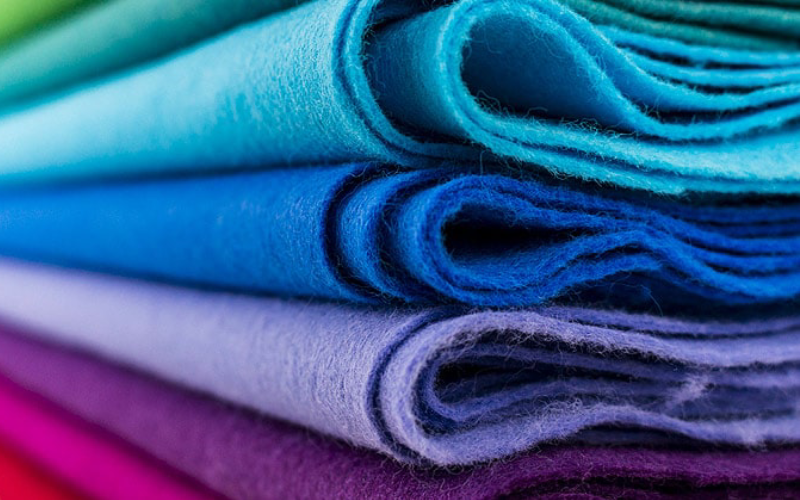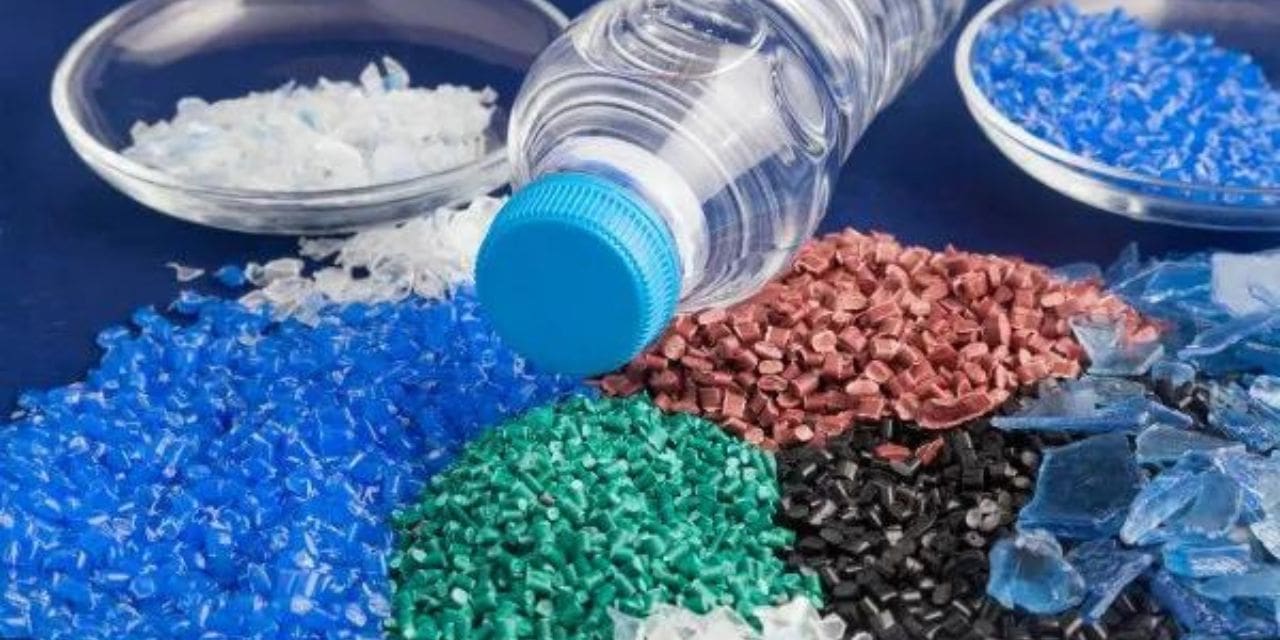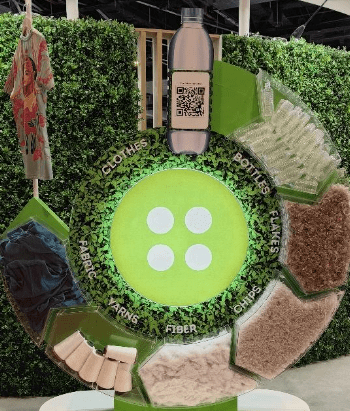By Mr. Avinash Mayekar, Managing Director, Suvin Expo LLP
Fast-changing fashion dynamics sometimes keep us wondering about the way we follow the fashion trap. Nowadays Viral is trending… is today’s reality but are we so soaked and dependent on it, that we are not making the effort to understand the technical and environmental impact of these trends or counterparts for usability? We just flow with the stream…
We must agree that there is a necessity for recycled fibres and recycled fibres are the only way forward and a major step to save our environmental balance. The simple question is adopting RPET fibres that are available in the market with recycled terms and creating textiles from it. Is this our way to a greener future?
My personal opinion of whether PET fibres are recycled textiles or not. With facts and theory so through this article, I will simply break down the concept into 4 aspects:
- Recycling
- PET Recycled textiles
- Circularity
- Sustainability
-
Recycling
Definition: “Recycling is the process of converting waste materials into new materials and objects”
So PET bottles when they are converted to fibres, technically we can call them recycled. Let us now see the second part of recycling – “Products should only be recycled if they cannot be reduced or reused”. Here is where the catch is – We often know how many Indian homes are reusing pet bottles to either water the plants, store garage oil or create decorative items. Also today these bottles are simply being taken back by the manufacturer to meet his sustainability goal by reusing them in its production. So consider this by converting pet bottles into fibres, if these fibres are not going to be environmentally friendly in the near future, Can we term it as recycled?
 Moreover, the recent factual information received from various converters during the recent Gartex/Technotex and fibres and yarn exhibition in Mumbai I was shocked to know that the shortage of pet bottles has forced the manufacturers to use fresh (raw) unused bottles to meet the demand. So if actual used bottles are not being converted into fibres then can they be called recycled? Moreover, aren’t we forcing more production of a product that is not needed? The recycling need arises only because the waste is generated. One more aspect is that if we produce pet bottles out of used pet bottles then we can recycle them 5 to 6 times as informed by some sources. Whereas if we convert them into textiles then they have only one-time use. Here we are creating an artificial need for green labels, is it the right thing to do?
Moreover, the recent factual information received from various converters during the recent Gartex/Technotex and fibres and yarn exhibition in Mumbai I was shocked to know that the shortage of pet bottles has forced the manufacturers to use fresh (raw) unused bottles to meet the demand. So if actual used bottles are not being converted into fibres then can they be called recycled? Moreover, aren’t we forcing more production of a product that is not needed? The recycling need arises only because the waste is generated. One more aspect is that if we produce pet bottles out of used pet bottles then we can recycle them 5 to 6 times as informed by some sources. Whereas if we convert them into textiles then they have only one-time use. Here we are creating an artificial need for green labels, is it the right thing to do?
-
PET Recycled Textiles
Now once these PET fibres are converted into recycled textiles…what then? We all know garments are having an end of their life. They will also land up in landfills at the end of their life cycle. So are we not converting one type of waste into another type of waste in one step? So our biggest problem of garment textile waste remains unaddressed. Unfortunately, we are somehow taking waste from other sectors and multiplying the waste generated by our sector. So are PET recycled textiles deserving of the green label?
-
Circularity
Definition: “Circularity is a practice which focuses on reducing waste as much as possible while keeping a product’s value intact for a longer period of time.”
The definition itself emphasises “keeping a product’s value intact for a longer period of time”. So by definition, the bottles were never part of our textile cycle. How can pet recycled textiles be the end product that retains the property of the original product?
 Moreover, we have our textile waste like pre-consumer waste – fibre stage waste, yarn waste, Chindi -trimmings, fabric rejects, cuttings, unsold garments, and rejects. Post-consumer waste – used clothes, rugs etc. All pet bottle waste can be easily converted into recycled bottles which can then be used as recycled bottles. Similarly, all types of textile waste can be reused for making textiles. This will be the true recycling meeting circularity. Take back what we produce to make products keeping their value intact and the ones that will last longer.
Moreover, we have our textile waste like pre-consumer waste – fibre stage waste, yarn waste, Chindi -trimmings, fabric rejects, cuttings, unsold garments, and rejects. Post-consumer waste – used clothes, rugs etc. All pet bottle waste can be easily converted into recycled bottles which can then be used as recycled bottles. Similarly, all types of textile waste can be reused for making textiles. This will be the true recycling meeting circularity. Take back what we produce to make products keeping their value intact and the ones that will last longer.
-
Sustainability:
Simplest definition: “Meeting the needs of the present without compromising the ability of future generations to meet their own needs.”
Often the term compromising is left out and that is where the whole problem arises. So just having the label “recycled” should not be the end goal. We must deliberately work on creating products that will not hamper the existence of our future generation. Circularity is the only practical goal for sustainability. One can achieve sustainability only through the practice of circularity. So PET bottles recycling into textiles destroys the circle of recycling. Figure 1 is the pet fibre value chain development reference image used by one of the leading manufacturers in a recent show.
Here if you look closely it is not a complete circle. The chain ends with pet fibre garments. Isn’t it self-explanatory to not be circular?
Changing Norms & Regulations:
During my recent moderation at the ITAMMA conference in Ahmedabad, one of the speakers from the Netherlands informed me of how European associations are not terming this as circularity and are making laws for the traceability & circularity of fibres more strict and compulsive for the products that will enter their market.
-
Conclusion
One might argue then what will happen to the pet bottle converters in the market. The pet bottle converters will always remain as pet bottle recycled chips and granules can be converted back to products of a similar nature like bottles, hard surfaces, and plastic products. Moreover, they must be converted into products like road pavements, and paver blocks/ bricks whose lifespan is much longer than the original product.
As far as introducing recycling labels to textiles is concerned we can easily do this by recycling textile waste which is produced in abundance. e.g. In the cotton Ring Spinning process the waste is almost close to 30%. Textile waste can be converted into recycled garments by using good-length recycled fibres whereas recycled short fibres are excellent inputs for converting into technical textile products like geotextiles, certain automotive applications, insulations fabrics, etc. by using needle punching and spunbond technology.
The time has come to avoid shortcuts and reduce landfill waste of textiles by reusing textile pre-consumer & post-consumer waste into recycled fibres which have great demand in the near future. Let us open our eyes and start producing recycled fibres which can be used in the textile value chain.


